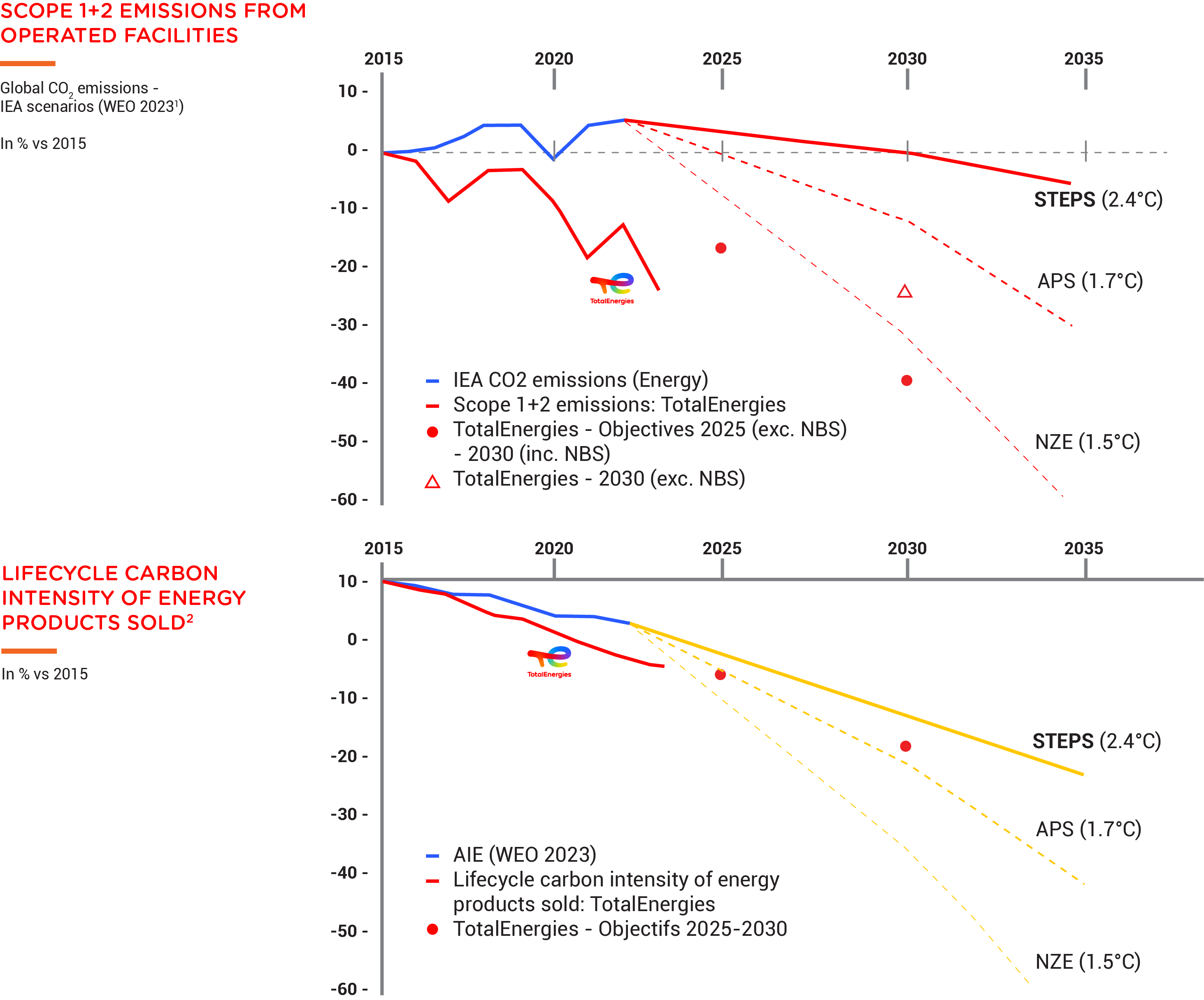Actuarial valuation – an actuarial valuation is an accounting exercise performed to estimate future liabilities arising out of benefits that are payable to members of a DB pension scheme, typically once every three years. In the actuarial valuation exercise, a liability payout at a future date is estimated using various assumptions such as discounting rate and salary growth rate.
Alignment – in a climate change context, alignment is the process of bringing greenhouse gas emissions in line with 1.5°C temperature rise targets. It can be applied to individual companies, investment portfolios and the global economy.
Asset class – a group of securities which exhibit broadly similar characteristics. Examples include equities and bonds.
Avoided emissions – these are reductions in greenhouse gas emissions that occur outside of a product’s life cycle of value chain, but as a result of the use of that product. For example, emissions avoided through use of a wind turbine or buildings insulation.
Bond – a bond is a security issued to investors by companies, governments and other organisations. In exchange for an upfront payment, an investor normally expects to receive a series of regular interest payments plus, at maturity, a final lump sum payment, typically equal to the amount invested originally, or this amount increased by reference to some index.
Buy-in – DB pension scheme trustees may choose to “buy-in” some of their scheme’s expected future benefit payments by purchasing a bulk (ie one covering many individuals) annuity contract with an insurance company. This allows the trustees to reduce their scheme’s risk by acquiring an asset (the annuity contract) whose cash flows are designed to meet ie “match” a specified set of benefit payments under the pension scheme. The contract is held by the trustees and responsibility for the benefit payments remains with the trustees. Common uses of buy-in arrangements have been to cover the payments associated with current pensioners or a subset of those members. Contracts to meet payments to members who are yet to become pensioners can also be purchased.
Carbon emissions - These refer to the release of carbon dioxide, or greenhouse gases more generally, into the atmosphere, for example from the burning of fossil fuels for power or transport purposes.
Carbon footprint – In an investment context, the total carbon dioxide or greenhouse gas emissions generated per amount invested (eg in £m) by an investment fund. Related definitions are used to apply the term to organisations, countries and individuals.
Climate change adaptation – steps taken to adapt to the physical effects of climate change such as improving flood defences and installing air conditioning.
Climate change mitigation – steps taken to limit climate change by reducing greenhouse gas emissions, for example by shifting to renewable sources of energy – such as solar and wind – and by using less energy and using it more efficiently.
Covenant – the ability of a company or companies with a legal obligation to a DB scheme to make up any shortfall between a DB scheme’s assets and the agreed funding target.
Credit – long-term debt issued by a company, also known as corporate bonds. Corporate bonds carry different levels of credit risk which is indicated by their rating and credit spread.
Defined Benefit (DB) – a pension scheme in which the primary pension benefit payable to a member is based on a defined formula, frequently linked to salary. The sponsor bears the risk that the value of the investments held under the scheme falls short of the amount needed to meet the benefits.
Defined Contribution (DC) – a pension scheme in which the sponsor stipulates how much it will contribute to the arrangement which will depend upon the level of contributions the member is prepared to make. The resultant pension for each member is a function of the investment returns achieved (net of expenses) on the contributions and the terms for purchasing a pension at retirement. In contrast to a defined benefit scheme, the individual member bears the risk that the investments held are insufficient to meet the desired benefits.
Debt – money borrowed by a company or government which normally must be repaid at some specified point in the future.
Default strategy – the fund or mix of funds in which contributions in respect of a DC member will be invested in the absence of any explicit fund choice(s) of that member.
Environmental, social and governance (ESG) – an umbrella term that encompasses a wide range of factors that may have been overlooked in traditional investment approaches. Environmental considerations might include physical resource management, pollution prevention and greenhouse gas emissions. Social factors are likely to include workplace diversity, health and safety, and the company’s impact on its local community. Governance-related matters include executive compensation, board accountability and shareholder rights.
Equity – through purchase on either the primary market or the secondary market, company equity gives the purchaser part-ownership in that company and hence a share of its profits, typically received through the payment of dividends. Equity also entitles the holder to vote at shareholder meetings. Note that equity holders are entitled to dividends only after other obligations, such as interest payments to debt holders, are first paid. Unlike debt, equity is not normally contractually repayable.
Ethical investment – an approach that selects investments on the basis of an agreed set of environmental, social and governance (ESG) criteria that are motivated by ethical considerations. These can be positive – eg choosing companies involved in water conservation or negative – eg not choosing companies involved in the arms trade.
Fiduciary obligations – a legal obligation of one party (a fiduciary) to act in the best interest of others. Fiduciaries are people or legal entities that are entrusted with the care of money or property on behalf of others. They include pension scheme trustees.
Fossil fuels – fuels made from decomposing plants and animals, which are found in the Earth's crust. They contain carbon and hydrogen, which can be burned for energy. Coal, oil, and natural gas are examples of fossil fuels.
Funding position – a comparison of the value of assets with the value of liabilities for a DB pension scheme.
Gilts – bonds issued by the UK government. They are called gilts as the bond certificates originally had a gilt edge to indicate their high quality and thus very low probability of default.
Greenhouse gas (GHG) emissions (scopes 1, 2 and 3) – gases that have been and continue to be released into the Earth’s atmosphere. Greenhouse gases trap radiation from the sun which subsequently heats the planet’s surface (giving rise to the “greenhouse effect”). Carbon dioxide and methane are two of the most important greenhouse gases. See also Appendix 1.
IC – the Investment Committee, a subset of the Trustee Board with particular responsibility for setting, implementing and monitoring the Plan’s investment strategy
Investment mandate – see pooled mandate and segregated mandate.
Integrated risk management – Integrated risk management is an approach used by DB pension scheme trustees to identify, manage and monitor the wide range of risks (relating to investment, funding and covenant) which might impact the chances of meeting their scheme’s overall objectives.
Liabilities – obligations to make a payment in the future. An example of a liability is the pension benefit ‘promise’ made to DB pension scheme members, such as the series of cash payments made to members in retirement. The more distant the liability payment, the more difficult it often is to predict what it will actually be and hence what assets need to be held to meet it.
Net zero – this describes the situation in which total greenhouse gas emissions released into the atmosphere are equal to those removed. This can be considered at different levels, eg company, investor, country or global.
Paris Agreement – the Paris Agreement is an international treaty on climate change, adopted in 2015. It covers climate change mitigation, adaptation and finance. Its primary goal is to limit global warming to well below 2°C, preferably to 1.5°C, compared to pre-industrial levels.
Physical risk – these are climate-related risks that arise from changes in the climate itself. They include risks from more extreme storms and flooding, as well as rising temperatures and changing rainfall pattens.
Pooled mandate – a feature of a collective investment vehicle whereby an investor’s money is aggregated (ie “pooled”) with that of other investors to purchase assets. Investors are allotted a share of those assets in proportion to their contribution. Ownership is represented by the number of “units” allocated – eg if the asset pool is worth £1m and there are 1m units then each unit is worth £1. Pooled funds offer smaller investors an easy way to gain exposure to a wide range of investments, both within markets (eg by buying units in a UK equity fund) as well as across markets (eg by buying units in both a UK equity fund and a UK corporate bond fund).
Portfolio alignment metric – this measures how aligned a portfolio is with a transition to a world targeting a particular climate outcome, such as limiting temperature rises to well below 2°C, preferably to 1.5°C, as per the Paris Agreement. Assessments using these metrics consider companies’ and governments’ greenhouse gas (GHG) emissions reduction plans and likelihood of meeting them, rather than current, or the latest reported, GHG emissions.
Responsible Investment (RI) – the process by which environmental, social and governance (ESG) issues are incorporated into the investment analysis and decision-making process, and into the oversight of investments companies through stewardship activities. It is motivated by financial considerations aiming to improve risk-adjusted returns.
Science-based targets – targets to reduce greenhouse gas emissions that are in line with what the latest climate science deems necessary to meet the goals of the Paris Agreement.
Science-Based Targets initiative (SBTi) – an organisation that sets standards and provides validation for science-based targets set by companies and investors.
Scenario analysis – a tool for examining and evaluating different ways in which the future may unfold.
Scope 1, 2 and 3 – a classification of greenhouse gas emissions. See Appendix 1.
Segregated mandate – a segregated investment approach ensures that an investor’s investments are held separately from those of other investors. This approach offers great flexibility – for example, the investor can stipulate the precise investment objective to be followed and can dictate which securities can or cannot be held.
Stakeholder – an individual or group that has an interest in any decision or activity of an organisation. The stakeholders of a company include its employees, customers, suppliers and shareholders.
Statutory obligations – statutory obligations are those obligations that do not arise out of a contract, but are imposed by law.
Stewardship – stewardship is the responsible allocation, management and oversight of capital to create long-term value for clients and beneficiaries leading to sustainable benefits for the economy, the environment and society. It is often implemented via engagement with investee companies and exercising voting rights.
TCFDSG – the TCFD Steering Group, a subset of the Trustee Board with broad responsibility for climate change management, recommending formal decisions to the IC for consideration
Taskforce on Climate-related Financial Disclosures (TCFD) – a group of senior preparers and users of financial disclosures from G20 countries, established by the international Financial Stability Board in 2015. The TCFD has developed a set of recommendations for climate-related financial risk disclosures for use by companies, financial institutions and other organisations to inform investors and other parties about the climate-related risks they face.
Transition risk – these are climate-related risks that arise from the transition to a low-carbon economy and can include changes in regulation, technology and consumer demand.





